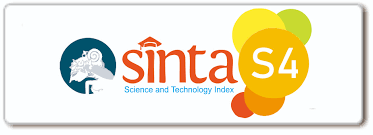Abusive and Discriminative towards Disability People in the Greatest Showman Movie Directed by Michael Gracey
DOI:
10.47709/ijeal.v3i1.2228Kata Kunci:
Abusive, Discrimination, BULLYINGDimension Badge Record
Abstrak
The objective of this research is to analyze how the abusive and discriminatory behavior portrayed in the movie towards persons with disabilities, as well as the effects of abusive behavior and discrimination. This study used a descriptive-qualitative method, with the primary source being the original video of The Greatest Showman and secondary data coming from books, articles, and journals on the internet. Data collection was carried out by watching films and understanding the movie’s dialogue several times, as well as making observations to deepen issues that are relevant to the main issues being studied, namely abusive behavior and discrimination against persons with disabilities. These results strengthen the analysis using Keashly's theory that two types of abusive behavior were found: physical violence and verbal violence. For discrimination using the theory from the U.S. The Equal Employment Opportunity Commission found several types of discrimination, namely disability discrimination, harassment discrimination, and race/skin color discrimination. The effects of harassment and discrimination are anxiety, violent behavior, psychological problems, marginalization, disempowerment, low self-esteem, and negative behavior.
Unduhan
Abstrak viewed = 399 times
##submission.downloads##
ARTICLE Diterbitkan HISTORY
Cara Mengutip
Terbitan
Bagian
Lisensi
Hak Cipta (c) 2023 Widya Melinia, Sayyid Khairunas

Artikel ini berlisensi Creative Commons Attribution-NonCommercial 4.0 International License.














